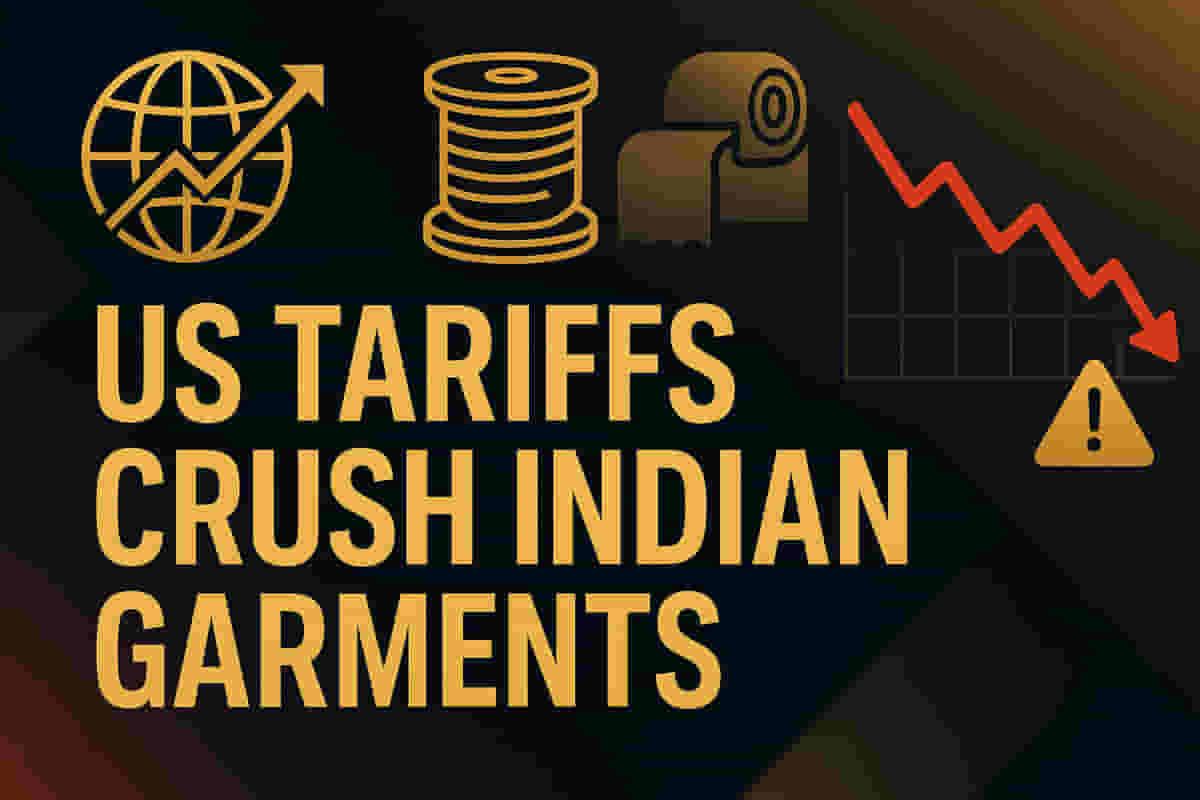US Tariffs Trigger Crisis in India's Garment Sector, Highlighting Competitiveness Issues
Textile
|
31st October 2025, 12:52 AM

▶
Short Description :
Detailed Coverage :
US tariffs of 50 percent, announced by Donald Trump and effective since August, are causing significant distress to India's manufacturing sector, especially labor-intensive industries like garments. This has led to factory closures in key hubs such as Tirupur, Noida, and Gujarat. The situation highlights India's declining competitiveness in garment manufacturing, a sector with historical economic and cultural importance. While Indian garment exports have remained stagnant at around $17 billion, Vietnam and Bangladesh have doubled theirs to about $45 billion each over the past decade, creating millions of jobs. India's share in US garment imports is only 6%, far behind Vietnam's 18% and Bangladesh's 11%, even before the tariffs.
Reasons for Uncompetitiveness: The primary issues are high raw material and labor costs. Raw material costs are inflated by tariff and non-tariff barriers. Labor costs are made uncompetitive by Indian labor laws. These laws, designed to protect workers, restrict working hours, mandate high overtime rates (2x wages, compared to the global 1.25-1.5x), and limit employer flexibility, hindering large-scale employment and efficient production scaling. This inflexibility prevents firms from adjusting workforce and production according to seasonal demand, impacting job creation and worker earnings.
Proposed Solutions: The article suggests modernizing labor laws to allow for greater flexibility in working hours and shift patterns, enabling work-hour averaging over longer periods (months to a year), similar to practices in Japan, the UK, Germany, and South Korea. This would allow firms to manage peak demand efficiently and workers to earn more. Rationalizing regulations could also boost formalization in the sector, which currently has a significant informal component due to compliance costs.
Impact: This uncompetitiveness and the new tariffs are projected to cause India to lose $3 billion in garment exports to the US, putting approximately 3 lakh jobs at risk. The crisis is a wake-up call for decisive policy action to reform regulations and improve manufacturing competitiveness. Rating: 8/10.
Difficult Terms: * Tariffs: Taxes imposed by a government on imported goods or exported goods. * Labour-intensive sectors: Industries that require a large number of workers relative to the capital used in production. * Competitiveness: The ability of a company, industry, or country to sell products or services in a market, especially compared to rivals. * Stagnant: Not growing or developing; unchanging. * Non-tariff barriers: Restrictions on trade that are not directly taxes, such as quotas, import licenses, or complex regulations. * Margins: The difference between the cost of producing a product and the price at which it is sold. * Labour laws: Regulations governing the relationship between employers and employees, including wages, working hours, and safety. * Mandating: Officially ordering or requiring something. * Uncompetitive overtime rates: Paying significantly higher wages for extra work than is standard in the industry or globally, making it economically unviable for employers. * Seasonal demand: Fluctuations in demand for a product or service that occur at different times of the year. * Lean months: Periods of low demand or sales in a business cycle. * Workforce: The total number of people employed by a company or organization. * Work-hour averaging: A system where total working hours are averaged over a defined period, allowing for flexibility in daily or weekly schedules as long as the average is met. * Rationalisation of regulations: Simplifying or making regulations more efficient and less burdensome. * Formalisation: The process of bringing informal economic activities or businesses into the formal sector, subject to regulations and taxation. * Informal: Economic activities that are not taxed or monitored by the government.